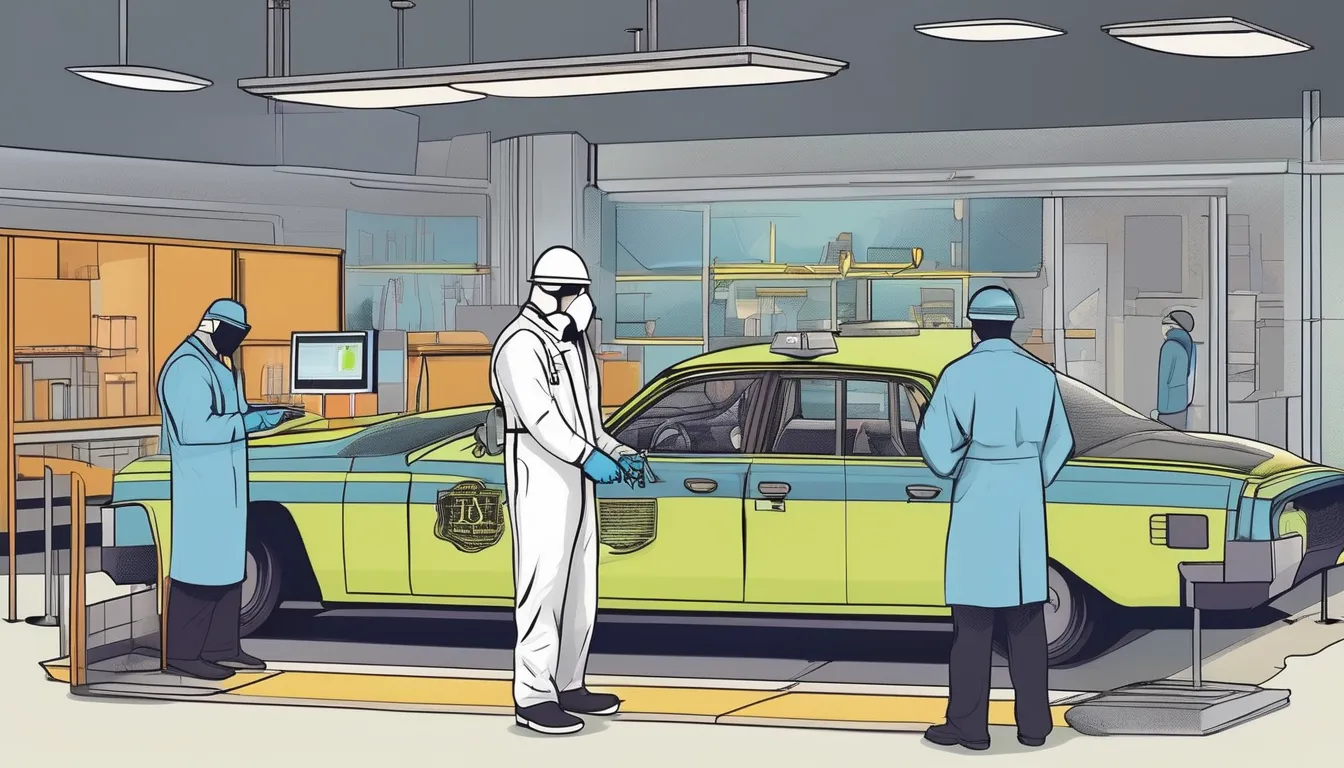Imagine you’re a detective trying to crack a high-profile case, and the only lead is a mysterious residue found at the crime scene. You’ll likely rely on hydrogen sulfide detectors ensics detectors to analyze and identify the substance. These advanced tools have revolutionized the field of criminal justice, enabling investigators to gather critical information and piece together the puzzle of a crime. With the integration of digital forensics, the possibilities for solving crimes have expanded exponentially. But how exactly do these detectors work, and what impact have they had on crime-solving rates?
Types of Forensics Detectors
Exploring the world of forensic science, you’ll encounter various types of detectors that aid in collecting and analyzing evidence. These detectors are crucial in helping investigators solve crimes, and they come in different forms.
You’ll find Ion Mobility Spectrometry (IMS) detectors that identify substances based on their ionic mobility, while Gas Chromatography-Mass Spectrometry (GC-MS) detectors analyze the composition of substances by separating their components.
Another type of detector you’ll encounter is the Explosive Detector, which uses various techniques, such as X-ray imaging and chemical analysis, to identify explosive materials. You’ll also find Bio Detectors that detect biological agents, such as anthrax and ricin, and Nuclear Detectors that identify radioactive materials.
Additionally, there are Metal Detectors that locate metal objects, including firearms and knives, at crime scenes.
As you delve deeper into forensic science, you’ll discover more specialized detectors designed to help investigators analyze evidence and solve crimes. These detectors play a critical role in the pursuit of justice, and their accuracy is essential in ensuring that evidence is properly analyzed and interpreted.
Advanced Crime Scene Analysis
You’ve seen how various types of detectors aid in collecting and analyzing evidence. Now, let’s dive deeper into advanced crime scene analysis, where you’ll combine data from these detectors to recreate the sequence of events surrounding a crime.
This process involves meticulous examination and documentation of the crime scene, including photographing and videotaping the area, collecting physical evidence, and conducting thorough searches for potential clues.
As you analyze the evidence, you’ll use specialized software to create 3D models of the crime scene, allowing you to visualize the layout and potential movements of individuals involved.
You’ll also use advanced techniques like crime scene reconstruction, where you’ll reenact the crime using data from the detectors and other evidence.
This helps you identify potential suspects, reconstruct timelines, and piece together the events surrounding the crime.
By merging technology with traditional investigative techniques, you’ll be able to gather a more comprehensive understanding of the crime scene, ultimately leading to more effective and efficient crime solving.
This advanced analysis is crucial in helping investigators build a solid case.
Forensics in Digital Age
How do digital technologies transform the field of forensic science? You’re likely to find digital forensics playing a key role in almost every investigation today.
With the rise of smartphones, computers, and other digital devices, digital evidence has become a crucial component in solving crimes. You’ll find investigators collecting and analyzing digital data from devices, networks, and the cloud.
Digital forensics tools allow you to extract and process data from damaged or encrypted devices, making it possible to recover evidence that was previously inaccessible.
You can also use software to analyze digital footprints, such as IP addresses and browser history, to reconstruct a suspect’s online activities.
Additionally, digital forensics enables you to analyze audio and video recordings, helping you to enhance poor-quality recordings and identify speakers or individuals in videos.
You’ll also find artificial intelligence and machine learning being applied to digital forensics, enabling you to quickly sift through large amounts of data and identify patterns or anomalies that may indicate criminal activity.
Impact on Crime Solving Rates
A surge in digital evidence has significantly boosted crime solving rates in recent years. This increase in digital data has equipped investigators with more leads and clues to crack even the most complex cases.
As you analyze the impact of digital forensics on crime solving rates, it’s clear that the numbers are telling a story of progress and success. According to statistics, crime solving rates have increased by as much as 20% in some jurisdictions, thanks to the effective use of digital evidence.
You’ll find that digital forensics has become an indispensable tool in modern crime solving. Digital evidence can provide investigators with critical information about a suspect’s identity, motives, and movements.
With digital forensics, investigators can now build stronger cases and bring perpetrators to justice more quickly. As a result, you’ll see that crime rates are decreasing, and communities are becoming safer.
The integration of digital forensics into crime solving has been a game-changer, and its impact will continue to be felt in the years to come. By leveraging digital evidence, investigators are solving cases more efficiently and effectively.
Future of Forensic Technology
As digital forensics continues to shape the crime-solving landscape, its future is taking shape with rapid advancements in technology.
You’re about to witness a revolution in forensic science that’s going to change the way crimes are solved. With artificial intelligence, machine learning, and the Internet of Things (IoT) playing a significant role in shaping the future of forensic technology, it’s an exciting time for law enforcement agencies.
Here are some key trends that’ll shape the future of forensic technology:
- Artificial Intelligence-powered forensic tools: These tools will help analyze evidence faster and more accurately, freeing up investigators to focus on higher-level tasks.
- Cloud-based forensic labs: Cloud technology will enable forensic labs to process and store evidence more efficiently, reducing the risk of contamination and increasing collaboration.
- Biometric analysis: Advances in biometric analysis will enable investigators to identify suspects faster and more accurately.
- Cybersecurity: As more devices become connected, cybersecurity will play a crucial role in protecting forensic data from cyber threats.
- Predictive analytics: Predictive analytics will help investigators identify patterns and anticipate potential crimes before they happen.
Conclusion
You’re witnessing a revolution in crime-solving with forensics detectors merging technology with criminal justice. From identifying substances to analyzing digital evidence, these advanced tools are streamlining processes and leading to safer communities. As digital forensics continues to evolve, you can expect even more accurate and efficient crime scene analysis. With forensics detectors, the future of crime-solving looks brighter than ever, and you can bet it will keep getting more sophisticated.


